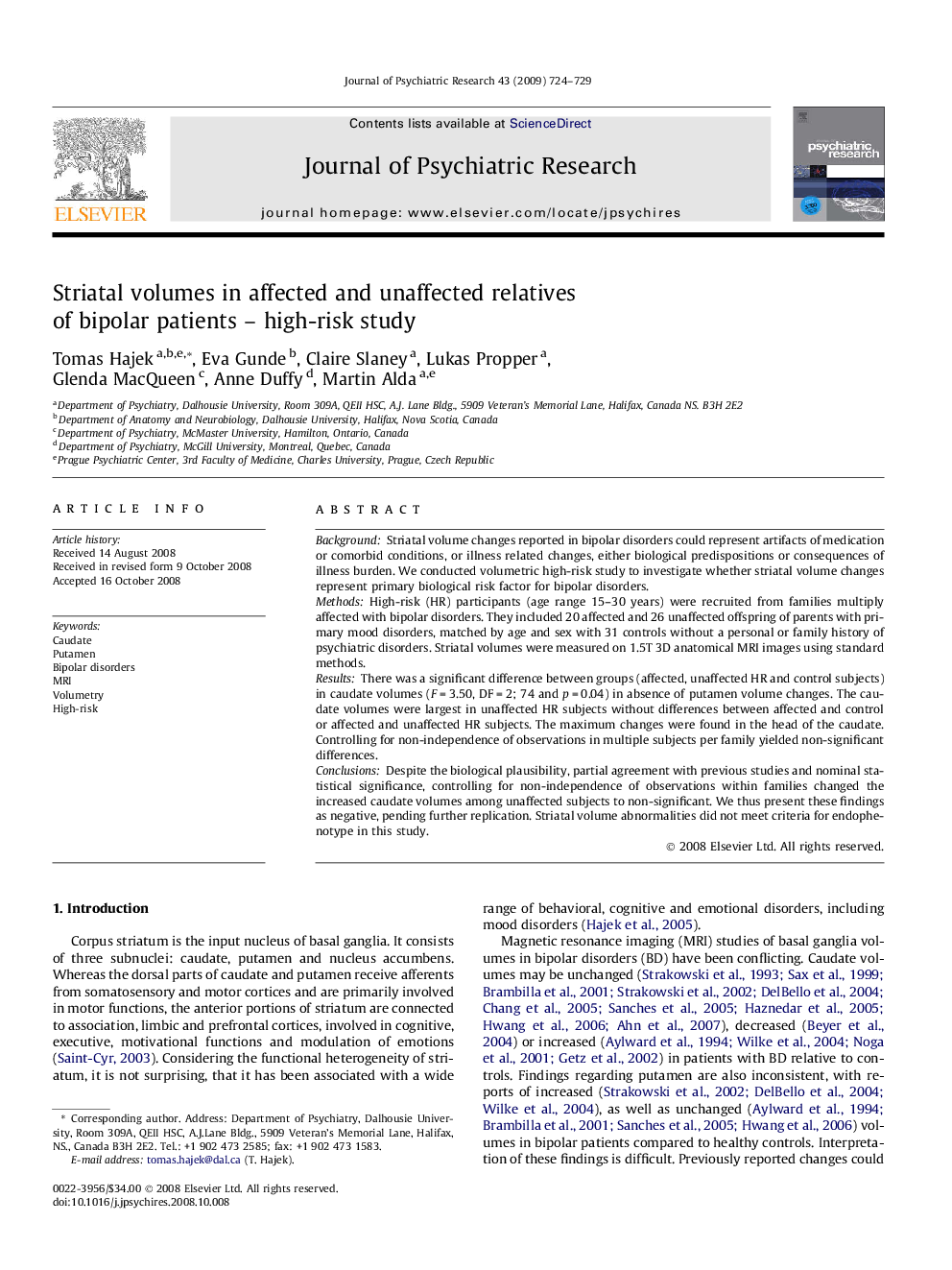| Article ID | Journal | Published Year | Pages | File Type |
|---|---|---|---|---|
| 326675 | Journal of Psychiatric Research | 2009 | 6 Pages |
BackgroundStriatal volume changes reported in bipolar disorders could represent artifacts of medication or comorbid conditions, or illness related changes, either biological predispositions or consequences of illness burden. We conducted volumetric high-risk study to investigate whether striatal volume changes represent primary biological risk factor for bipolar disorders.MethodsHigh-risk (HR) participants (age range 15–30 years) were recruited from families multiply affected with bipolar disorders. They included 20 affected and 26 unaffected offspring of parents with primary mood disorders, matched by age and sex with 31 controls without a personal or family history of psychiatric disorders. Striatal volumes were measured on 1.5T 3D anatomical MRI images using standard methods.ResultsThere was a significant difference between groups (affected, unaffected HR and control subjects) in caudate volumes (F = 3.50, DF = 2; 74 and p = 0.04) in absence of putamen volume changes. The caudate volumes were largest in unaffected HR subjects without differences between affected and control or affected and unaffected HR subjects. The maximum changes were found in the head of the caudate. Controlling for non-independence of observations in multiple subjects per family yielded non-significant differences.ConclusionsDespite the biological plausibility, partial agreement with previous studies and nominal statistical significance, controlling for non-independence of observations within families changed the increased caudate volumes among unaffected subjects to non-significant. We thus present these findings as negative, pending further replication. Striatal volume abnormalities did not meet criteria for endophenotype in this study.
